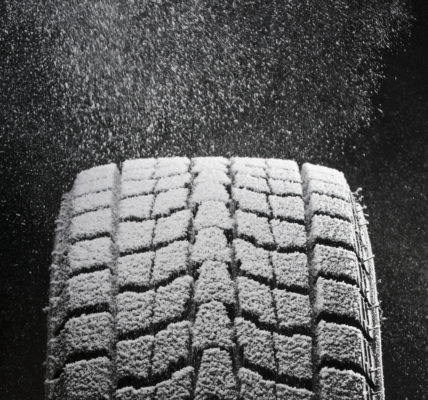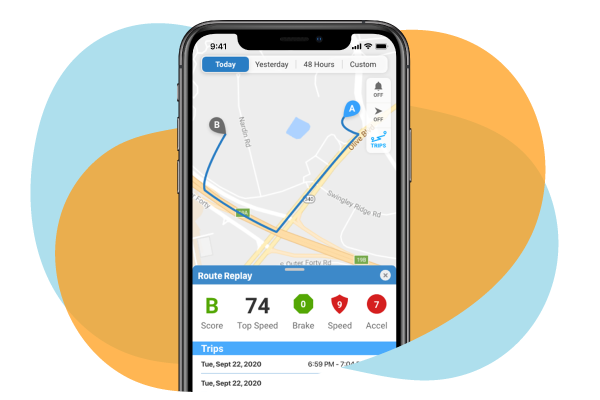
By Jana Rhodes / Posted November 26, 2014
Winter Driving Safety Part II: Winterizing Your Car
It’s always a good idea to make sure your family vehicles are in top working order. With proper winterization and maintenance, cars handle better on wet, slippery, and snow-packed roads. They’re also less likely to need unforeseen repairs and will operate more efficiently, saving you money in the long run. Plus, it’s never fun when your car breaks down and leaves you (or your family member) stranded – especially in below freezing temperatures!
In Part II of our Winter Driving Safety blog series, we’ve compiled some general tips on vehicle winterization. Of course, there are a number of factors to consider when preparing your car for the season, such as the severity of winter weather where you live, locally mandated safety requirements in your area, type and age of your vehicle, and more. We recommend you consult with a trusted auto-maintenance professional near you for complete advice on winterizing your specific vehicle(s).
Engine and Fluids
You know this feeling – you open your front door and step from your warm home into the cold winter morning. Your body braces for the brutal chill. Your movement is a bit stiffer, more sluggish, than when you walk out that same door on a warm weather day. It takes you a few minutes to adjust to the temperature. The process is similar for your vehicle.
We take steps to protect our bodies from the cold. We need to do the same for our cars. Start with the key components that keep your engine running:
- Motor oil keeps your engine lubricated and working properly. Cold temperatures can cause motor oil to thicken and move more slowly, potentially causing your engine to overheat. In the wintertime, you may need to switch to a type of motor oil with a lower viscosity – or thickness. Your owner’s manual should contain recommendations for the right motor oil type for your vehicle. Your mechanic or dealership should also be able to provide this information. It is also recommended that car owners get regular oil changes after every 3 months or 3,000 miles (or 5,000km) of driving.
- Antifreeze keeps your engine from freezing on cold days and overheating on hot days. It also keeps your engine free of corrosion. Without enough antifreeze, you risk irreparable damage to your vehicle. Your radiator should contain a 50:50 a ratio of antifreeze and water. Pre-mixed antifreeze is available at most gas stations and auto parts stores, and any service station should be able to assist you with checking and replenishing your antifreeze if you need help.
- Check your battery. Most car batteries need to be replaced every 3-5 years. Is yours due for a change? Cold weather can cause your engine to work harder, which can put more strain on your battery. Wnter a common time of year for batteries to fail, so make sure yours is in good condition before you find yourself left out in the cold.
- Even if your car battery isn’t very old, it’s still a good idea to give it a quick check. Make sure your battery fluid isn’t low and that there are no signs of fraying or corrosion on battery cables and clamps.
Tires
Proper tire tread and pressure are critical keeping control of a car in ice or snow. Under- or over–inflated tires, and/or lack of tread will prevent your tires from effectively gripping the road surface. That can mean slipping and sliding – and quite possibly crashing when the roads are slick!
- It is recommended that all drivers check tire tread and pressure weekly to ensure optimum performance – especially in winter weather.
- Know the age of your tires. If you’ve wished yours one too many happy birthdays, or if the tread is starting to show wear, it might be time to invest in a new set. The lifespan of tires varies depending on type and brand of the tire. Unsure if yours are ready to be replaced? Stop by a trusted local service shop for a professional assessment and recommendation.
- Live in an area prone to snow and ice? You may consider switching to snow tires for the season, or keeping a set of tire chains in your vehicle in case conditions get particularly treacherous. (Some areas prone to heavy winter precipitation enforce this by law.)
- Rotate your tires every 3,000 – 6,000 miles (5,000 – 10,000km) to help them wear more evenly and last longer. This will help ensure better traction – AND save you money in the long run!
- Always have a fully inflated spare tire in your vehicle, plus tools on hand to change a flat if necessary.
Windshield Wipers and Wiper Fluid
Clear visibility is essential for safe driving. Precipitation, wet roads, and freezing temperatures can make it difficult for drivers to maintain a clean field of vision. Check your windshield wiper blades and fluids before winter weather hits.
- Windshield wipers should be replaced every 6 – 12 months. The start of the winter season is the perfect time to replace older blades.
- Even relatively new wipers won’t do their job if the blades can’t keep even contact with the surface of your windshield. Maintain wiper blades by protecting them from snow and ice build-up. Prevent wiper blades from freezing to the windshield or becoming covered in heavy snow by lifting them to vertical position when your vehicle is parked and winter weather is expected.
- Inspect wiper blades throughout the cold weather months. Harsh temperatures can cause the rubber on the blades to crack and deteriorate prematurely.
- Check and refill your wiper fluid regularly. You’ll likely use more wiper fluid in the winter. It can be crucial for keeping a wet windshield from freezing over when the temps are low and your vehicle is in motion. Be sure you’re prepared.
Lights
As a driver, it is important that you are able to clearly see the road and other drivers on it. It is as important that other drivers can see you, as well. Be sure all of your lights are in working order and replace any bulbs that are dim or burned out. Check headlights and taillights, high beams and low beams, daytime running lights, and break lights.
Fuel
The last thing anyone wants to do, even on the most beautiful, sunny spring day, is to push a stalled vehicle out of traffic because you’ve run out of gas. Now imagine that same scenario with single-digit temps, a stinging wind biting you in the face, and falling snow that’s piling up fast. It isn’t fun – and it isn’t safe! In fact, it can have deadly consequences. We know the idea of leaving your warm driver’s seat to fill your tank in freezing conditions doesn’t sound enjoyable either – but it isn’t worth the risk. Don’t gamble with your safety by trying to get to your destination on fumes.
If that thought isn’t enough to persuade you to fill up, consider the possibility of expensive repairs. Allowing your car to run low on gas can be damaging to your vehicle. In the cold, empty tanks can allow condensation to enter fuel lines. That moisture can freeze and block fuel from reaching your engine, causing your travel plans to come to a screeching halt until costly repairs are complete.
Do your best to keep your family vehicles in top working order and in prime shape for navigating slick winter roads. It will help everyone in your family drive better, and get home safely when winter weather hits. Then go ahead – feel free to surprise them with a snowball or two… just don’t tell them it was our idea!

- Installs in seconds
- Rates driver performance
- Monitors safe driving behaviors
- Shows location in real time
- Generates alerts for speeding and more
- Signals unauthorized usage

Next Post
Winter Driving Safety Part III: The Holidays
November 26, 2014From Thanksgiving to New Years, the holidays are a time of love and laughter, fun and celebration. It is a joyous and festive time of year, but…
Previous Post
Winter Driving Safety Part I: Driving in Extreme Weather Conditions
November 25, 2014Old Man Winter is back and he wants to show us what he’s made of this year! Much of the U.S. has already felt temps below freezing, and if you live…


